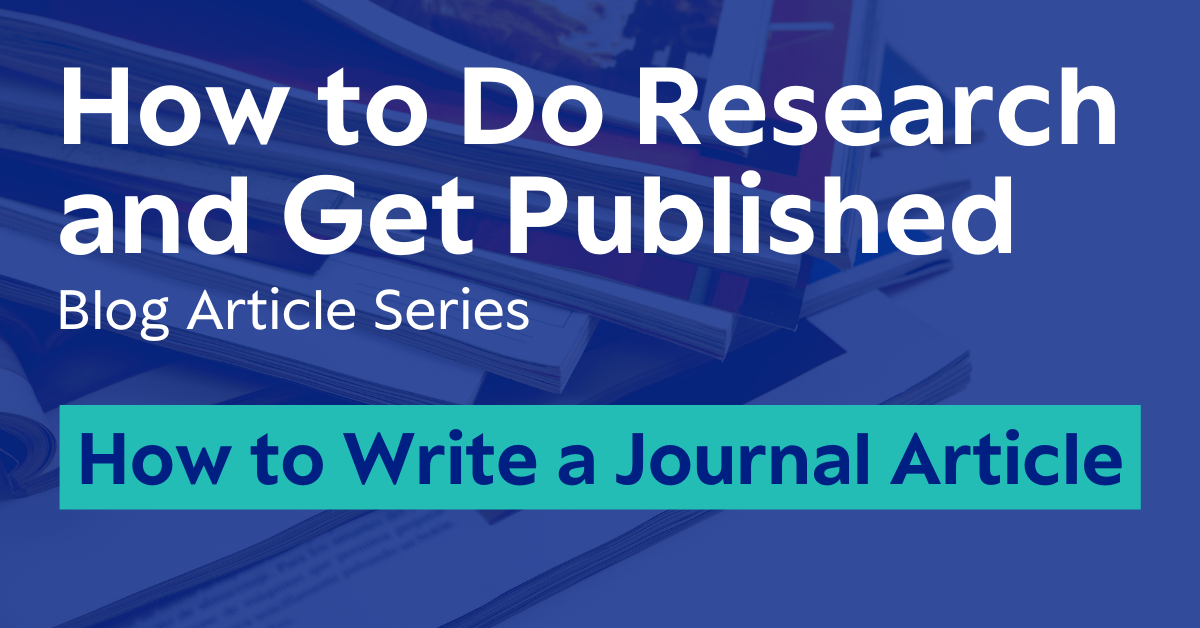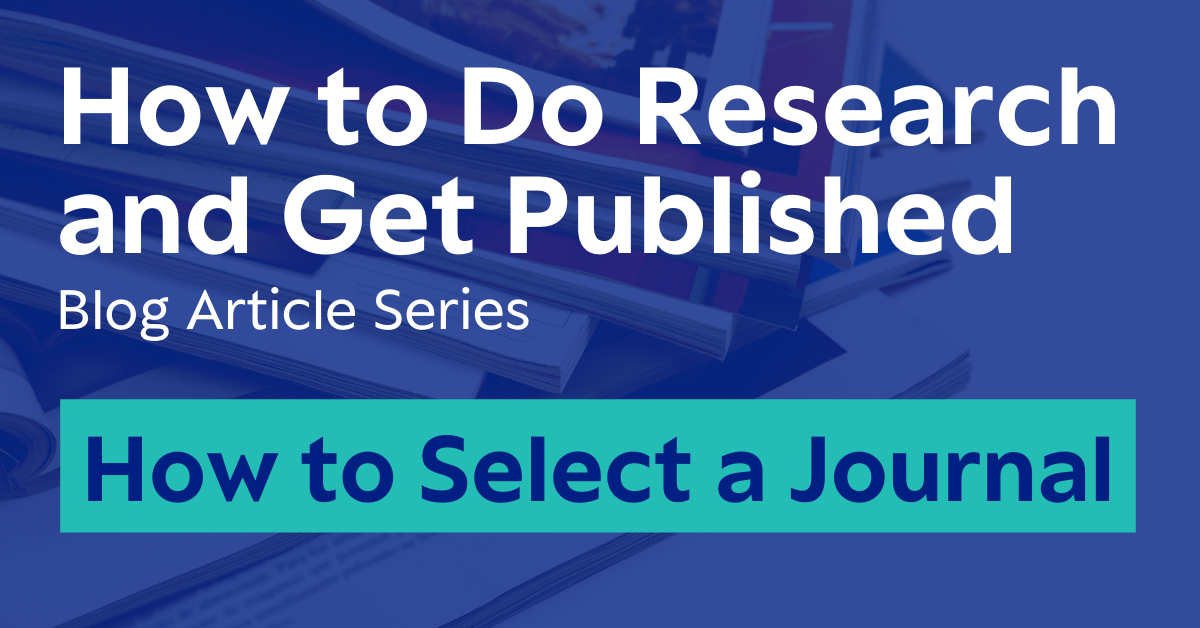
A key stage of academia is learning how to create the best manuscripts most likely to be accepted. Journals can reject manuscripts for reasons ranging from incompatibility to minute details such as incorrectly formatted graphs. As such, it is essential to understand what a manuscript must have and how it is done.
Sage’s webinar series, How to Do Research and Get Published, features SAGE editorial staff with significant editing and publishing backgrounds, who sit down in conversation to help rising academics have the best chance of publishing success. This episode centres around best formatting a manuscript for journal acceptance, as well as tips on how to best go about writing an article.
Preparing To Write
Jessica Lipowski (Publishing Editor on the STM Journals Editorial team) opened the discussion by inviting academics to consider several outcomes of the published article. Who the audience will be, how it will expand research knowledge, the significance of the article, the validity of your findings, and the research implications of your work are all essential to consider for whether your manuscript has substantial research value. “Millions of journal articles are published each year, so asking yourself these questions will really help you get started.”
Lipowski also provides tips on how to start writing such as taking time to brainstorm, having enough research and data materials, and reading current work in the field to be up to date on the latest research. She also suggests asking experienced academics for advice, outlining, organising, re-reading and revising to ensure the manuscript is up to par.
Authorship
When it comes to choosing a central author, it’s essential to understand the factors that go into who should be central. The principal author should have contributed substantially to the research, analysis, concept or design of the work, revised critically or drafted the work, and approved the final version. Lipowski asserts that mainly, the principal author should have participated enough to justify public responsibility for the work. Any additional authors should be listed in the acknowledgements.
Article Structure
M. Nadeem Aslam (Assistant Research Scientist, Editor of the Prevention of Cancer Control Editorial board) describes the basics of a good manuscript structure. The title should be short, unique, and catching the reader’s attention. “You should write your manuscript first, and then based on your manuscript, you can pick a title… it’s a first impression of your story.”
“You have a special place in your heart for your first published article, so make sure your name is spelled correctly.” Aslam laughs. Keeping the author name consistent in published work is essential to ensure all articles are connected to one author profile.
Dr Jennifer Lovick (Managing Editor of the Open Access Journal team, Executive Editor of Open Access Journal of Technology and Cancer Research) continues the conversation with the abstract. The abstract must be brief and easy to read, as a well-written abstract will increase readability and citations. “The abstract is much easier to write after the article is written, much like the title.” Lovick says.
Dr Aslam dives into the article structure from the introduction, explaining how it highlights the story’s purpose, the hypothesis behind the article, the conceptual framework used, and the question you want to address in your work. “It sets up the stage for readers.”
The methodology section should highlight how the study was used and the research method conducted. It should also include ethical consideration and approval. “What did you do? What was your technique? How did you prepare your samples? How did you collect the data?” Dr Aslam says. He further emphasises that this section must be transparent and ethical to create trust and validate data.
Dr Aslam highlights a common error. “Authors make a mistake by offering the readers data, but don’t provide results… they don’t provide interpretation of data.”
Dr Lovick says, “It’s really helpful when authors specify chosen methods up front, and the rationale for why those methods were chosen with relevant references… it will get the manuscript through peer review quicker.”
Data must be presented, complications explained, and answers to the research emphasised clearly before moving on to the discussion, where authors must decode the meaning of their results. Authors must highlight how this impacts previous works in the field and close the research by connecting the answers to the questions posed in the introduction.
Within the conclusion, research implications and recommended future studies are essential to close the manuscript with an impactful finish. Dr Aslam says, “Work with others in the team who are experienced, organise the data to tell a story… create the research story you want to share.”
Mistakes to Avoid
Dr Lovick highlights reasons an article won’t be published. “The inclusion of detailed ethics approval and informed consent statements is a final requirement for medical research articles. If these things are missing or incomplete, very often manuscripts will be sent back to the authors… It’s important to disclose conflicts of interest or funding as well up front.”
Dr Aslam highlighted the importance of writing style; using an academic voice, active voice over passive voice, and concise language will all contribute to a cohesive voice to connect the manuscript throughout for flow. It is also essential to use inclusive language to be appropriate for a global audience, with considerations for writing about religion, gender, race, and other identifying factors and an understanding that a shared identity does not correlate to a shared experience.
Overall, aligning work to proper reporting guidelines, highlighting contributions to the research field, having appropriate references, and correctly incorporating figures are essential for a strong manuscript.
Dr Lovick emphasises the key questions to consider once the article is complete. “Are the results presented in a way that best emphasises the findings? Are these sections free of unsupported generalisations or assumptions? Are the conclusions appropriate for the study? Are there appropriate limitations and directions for future research?”
Lipowski also highlights how to help readers find the research. A well-written title and abstract, findable keywords throughout the manuscript, and creating a user-oriented work are all essential for a manuscript to receive reader traction.
It can be small details such as image editing and quality that can affect your article. Dr Lovick cites factors such as image sizing and specifics, poor grammar, a low-quality image, over-edited images, undisclosed edits, and poor referencing that can cause delays in publication or rejection.
The Small Details Before Submission
As such, in the final preparation for submission, authors should focus on the small details such as manuscript submission guidelines, high-quality work, objectivity, including ethics, funding, and conflict of interest statements, and abiding by research ethics.
Lipowski emphasises that manuscript submission guidelines such as word limits, article structure, reference style, figure labels, cover letters, and copyright permissions must be followed to have an accepted article with a faster peer review process.
Writing a manuscript is an enriching process with countless academic benefits, so it is essential to do it correctly. By following these tips and tricks, authors can more likely find accepted articles and a faster peer review process, cementing themselves as published authors.
With webinars focussing on each stage of the publishing process, this How To Get Published episode centred on writing manuscripts and submission guidelines. Sage’s other webinars in this series are available on the Sage website.





